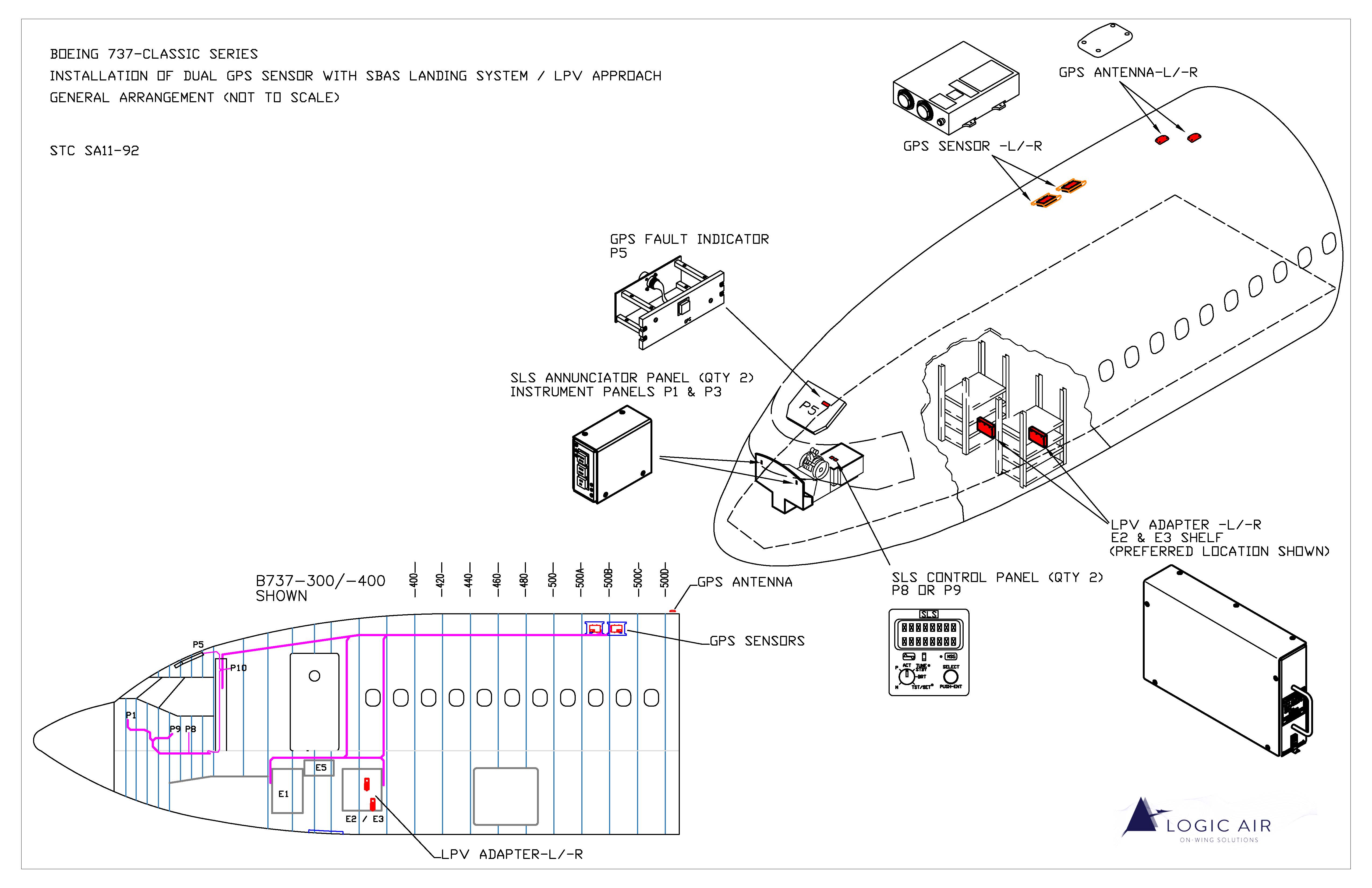

Dual CMC SBAS Landing System
Overview
Introduction
Dual SBAS Landing System for Boeing 737-Classic Series
Logic Air’s STC integrates renowned CMC’s CMA-5024 GPS/SBAS Landing System Sensor Units and CMA-5025 SLS control panels (or Gables’ Touch DU – EASA 10075510) with the aircraft systems (FMS, EFIS and DFCS) to provide operational and safety benefits of Localizer Performance with Vertical Guidance (LPV) fully coupled precision landing capability.
Your needs
-
Your benefits
1. Enhanced Safety and Compliance
2. Operational Efficiency
3. Competitive Advantage
4. Cost Management
5. Sustainability Goals
6. Long-Term ROI
7. LPV approaches are much more stable (not dependent on RF signal/interference/weather).
Product Description
The STC can be implemented in two parts:
1 - GPS /RNP: Introduces the GPS sensor units with the required interface to the aircraft systems (IRS, ADC, FMS, EGPWS and Transponder (ADS-B)) for
RNP 1/RNP 0.3 operation.
2 - SLS/LPV: Provides GPS precision landing capability in an ILS look-alike format, requiring minimal crew training.
Your benefits
1. Enhanced Safety and Compliance
2. Operational Efficiency
3. Competitive Advantage
4. Cost Management
5. Sustainability Goals
6. Long-Term ROI
7. LPV approaches are much more stable (not dependent on RF signal/interference/weather).



